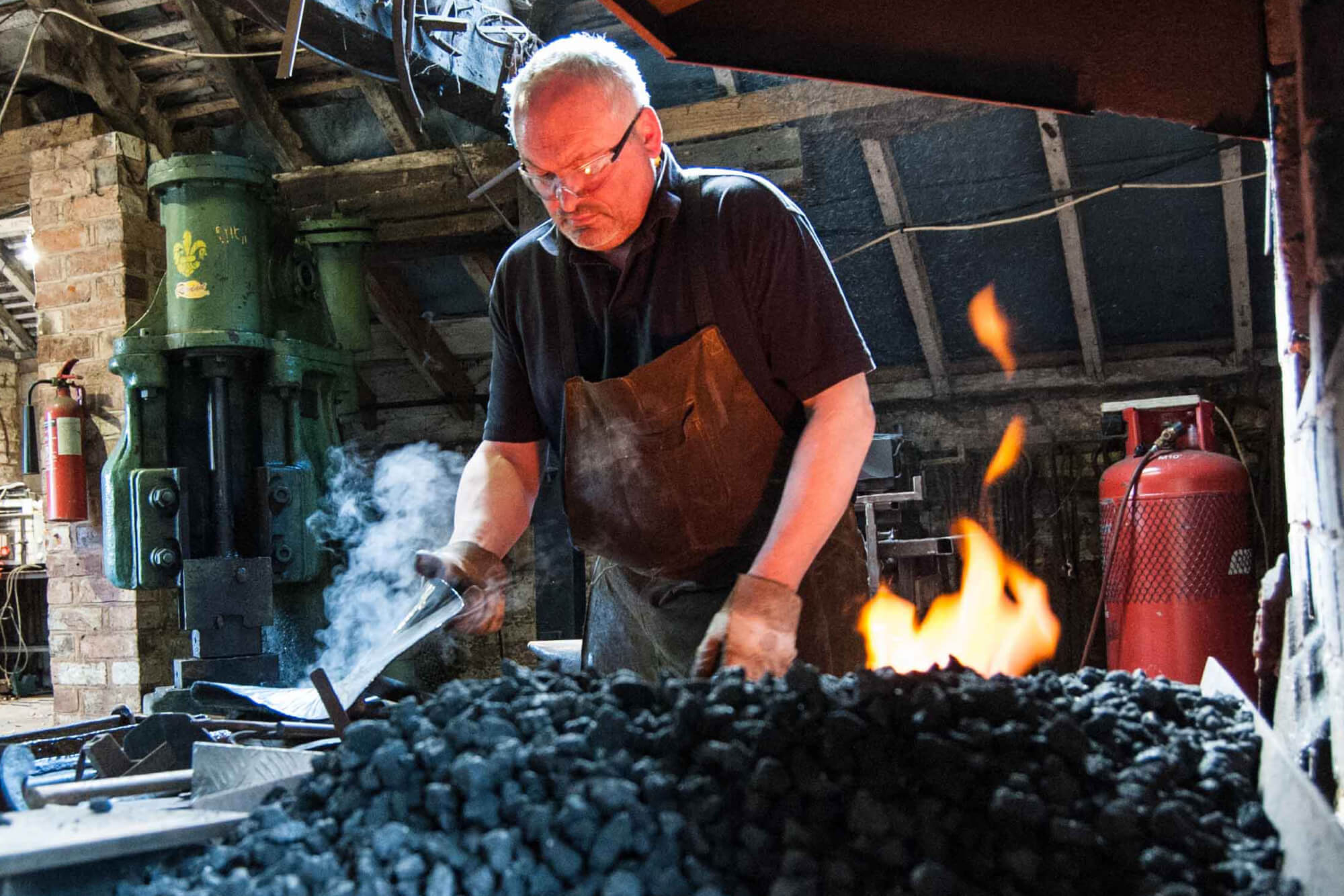Andrew Findlay’s journey into the world of metalwork began with a simple fascination with art, evolving into a lifelong passion for blacksmithing. Training as a welder in his 20s, Findlay’s early experiences repairing ornate park gates in London ignited a profound interest for traditional metalworking techniques. ‘When I found out these components were made with a hammer, anvil and forge fire, I had a lightbulb moment and decided that was what I wanted to do,’ he recalls.

At its core, a forge is a hearth used for heating metals, allowing artisans like Findlay to shape materials – specifically metal – more efficiently. Traditional forges employ bituminous coal, industrial coke or charcoal to generate the intense heat necessary for this process and, despite evolving designs, the fundamental principles of forging have remained consistent through the centuries. It’s this type of heritage forge that can be found at Eastnor.
Findlay has worked at Eastnor Forge for the past 20 years. This historic structure, which is believed to date back to the 17th century, has preserved its charm and utility. ‘Eastnor is a fantastic place to work, a vibrant village that hosts several craftspeople and enterprises,’ says Findlay. ‘I love Eastnor’s idyllic setting, being near the beautiful Malvern Hills, seeing red kites circling outside the forge, being surrounded by nature and the cross-fertilisation of ideas with other craftspeople.’
Before his tenure at Eastnor, Findlay embarked on a self-taught path that began in a modest barn on a Welsh farm. With limited tools, he quickly learned the art of blacksmithing by selling his creations at local markets. His talent caught the attention of a high-end design shop in Fulham Road, London, leading to opportunities that expanded his clientele to architects and designers worldwide.
But Findlay’s career reached new heights when he took on a project between 2008 and 2011 for a villa on the Palm Jumeirah in Dubai. This ambitious undertaking included more than 80 intricate window grilles, elaborate chandeliers and a stunning pair of four-metre-high bronze entrance doors.
‘I was given carte blanche with the entire design,’ Findlay explains, highlighting the trust placed in him by interior designer Richard Farnell. ‘The project was extremely complex, and I took on 3,000sqft of additional workshop space near Eastnor and four skilled smiths.’
The craft of blacksmithing is steeped in history, with artisans historically pushing the limits of their tools. Findlay draws inspiration from ancient techniques, recalling the intricate patterns of Saxon and Viking artefacts. ‘This makes me experiment and take risks with my work,’ he notes. ‘There is always more to discover, particularly when blacksmithing is combined with new technologies like laser cutting.’ Remaining committed to exploring the endless possibilities of metalworking, Findlay proves that the Eastnor forge is as relevant today as it was centuries ago.
